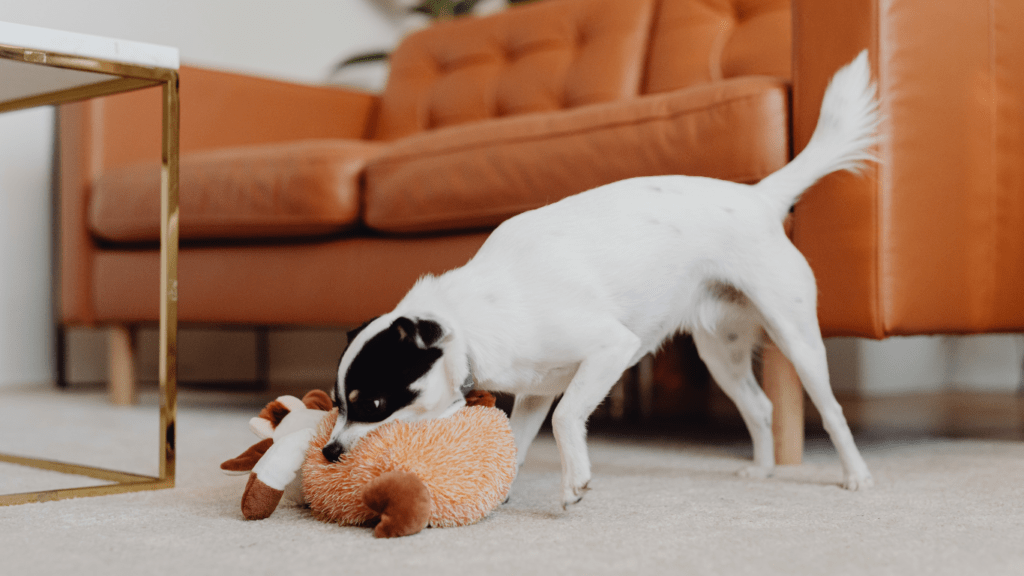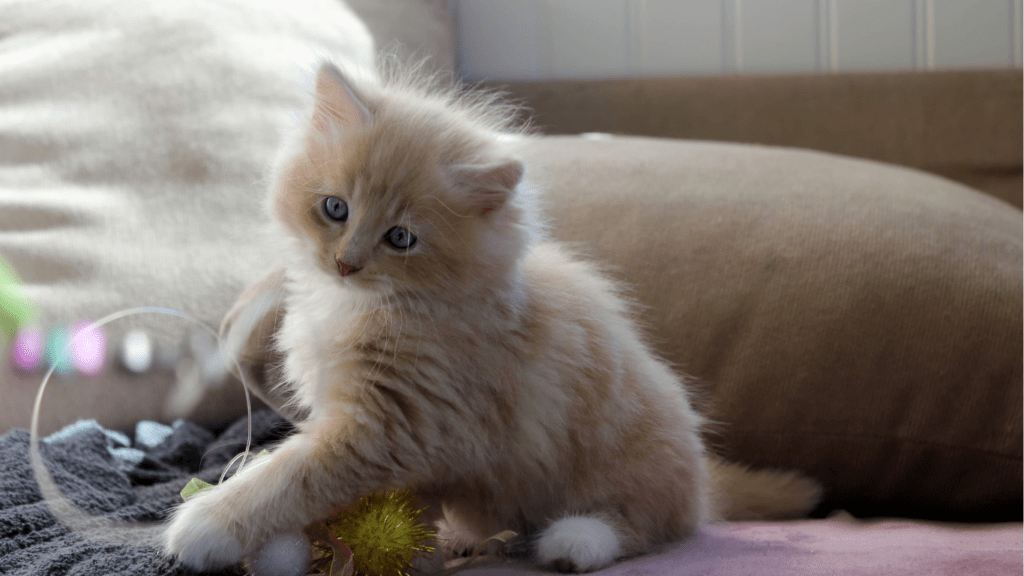Benefits of Indoor Exercise for Pets
Keeping pets active indoors isn’t just a practical solution for unfavorable weather. It’s also essential for their overall well-being.
Physical Health Benefits
Indoor exercise helps pets maintain a healthy weight, reducing the risk of obesity-related diseases.
Activities like:
- fetch
- hide
- seek
- using interactive toys keep pets moving
These exercises strengthen muscles, improving joint mobility. Regular physical activity indoors also supports cardiovascular health, helping pets avoid conditions like heart disease.
Mental Health Benefits
Engaging pets in indoor activities stimulates their minds, preventing boredom. Cognitive toys, puzzle feeders, and simple training sessions keep their brains active.
Indoor games sharpen their problem-solving skills. Mentally stimulated pets exhibit fewer behavioral issues, such as excessive barking or destructive chewing. Involving pets in diverse indoor activities fosters a strong bond, enhancing their emotional well-being.
Types of Pets and Specific Indoor Exercises

Choosing the right indoor exercises for pets is crucial to catering to their unique needs. Different pets require distinct types of activities to stay healthy and happy.
Dogs
Dogs benefit from various indoor exercises tailored to their size and energy levels. Tug-of-war with a sturdy rope, fetch using soft toys, and agility drills around furniture help keep dogs engaged.
Puzzle toys containing treats stimulate their minds while providing physical activity. Small dogs can enjoy interactive games like hide-and-seek to burn off energy.
Cats
Cats thrive on activities that tap into their natural hunting instincts. Use laser pointers or feather wands to encourage them to chase and pounce.
Vertical spaces like cat trees or shelves allow cats to climb, which exercises their muscles and improves balance. Interactive toys loaded with treats or kibble keep cats entertained and mentally sharp. Scratch posts and tunnels offer additional physical stimulation.
Small Animals
Small animals like hamsters, rabbits, and guinea pigs also require specific exercises. Hamsters benefit from running wheels and mazes.
Rabbits enjoy exploring obstacle courses made from household items, encouraging them to hop and stretch. Guinea pigs appreciate tunnels and hiding spots to burrow and scamper. Providing varied activities ensures these pets remain active and stimulated indoors.
Essential Equipment for Indoor Pet Exercises
Equipping your home with the right tools ensures your pets stay active and mentally engaged. Let’s explore some crucial items for effective indoor exercise.
Toys and Accessories
Toys give pets the necessary stimulation to stay entertained. For dogs, interactive toys like treat-dispensing balls encourage mental and physical activity.
Cats prefer feather wands and laser pointers, which tap into their hunting instincts. Small animals like hamsters benefit from running wheels and chew toys. Additionally, providing a variety of toys prevents boredom and keeps pets engaged longer.
Space Considerations
Having ample space maximizes the effectiveness of indoor exercises. Clear a designated area where pets can move freely. For dogs, consider using hallways or basements for activities like fetch or agility drills.
Cats need vertical space, so set up climbing trees or shelves to promote jumping and climbing. Small animals need secure enclosures with enough room for obstacle courses. Allocating proper space ensures pets can exercise safely and efficiently indoors.
How to Motivate Your Pet to Exercise
Indoor activities are crucial for pets’ well-being. Motivating them involves creating routines and using treats.
Creating a Routine
Consistency forms the foundation of effective pet exercise routines. Establish regular times for activity, ensuring your pet knows when to expect exercise.
Morning and evening sessions work well, allowing pets to expend energy during peak times. Use engaging activities like fetch for dogs, laser pointer for cats, or tunnels for small animals, ensuring the sessions are fun and stimulating.
Using Treats and Rewards
Positive reinforcement makes exercise enjoyable for pets. Use favorite treats to reward active behavior. For dogs, small training treats work best for frequent rewards.
Cats respond well to treats like freeze-dried fish or toys infused with catnip. For small animals, fresh vegetables offer healthy incentives. Give treats immediately after desired activity to reinforce the connection between exercise and reward.
Safety Tips for Indoor Exercises
Ensuring the safety of your pet during indoor exercises is crucial. Follow these guidelines to avoid injuries and monitor your pet’s activity effectively.
Avoiding Injuries
Place mats, carpets, or rubber flooring in play areas to prevent slipping, especially for larger dogs prone to joint issues. Choose soft toys without sharp edges to avoid cuts and bruises.
Supervise pets while they’re using exercise equipment like treadmills and wheels to prevent accidents. Limit high-impact activities like jumping off furniture to minimize stress on joints. Should your pet show signs of pain or discomfort, consult a veterinarian immediately.
Monitoring Your Pet’s Activity
Track the duration of each play session to ensure your pet gets the right amount of exercise without overexertion. Use activity monitors, available for both dogs and cats, to measure activity levels accurately.
Observe for signs of fatigue, like excessive panting or reluctance to continue playing, and give your pet plenty of rest if these appear. Keep an eye on your pet’s weight and adjust exercise routines if they gain or lose weight too quickly.
Ensuring Hydration
Provide fresh water during breaks to keep your pet hydrated, especially after intense play sessions. Place water bowls in accessible locations to encourage regular drinking.
If your pet seems overheated, offer cool water and a comfortable resting area to help them recover. Consider using pet-safe water fountains to maintain a continuous supply of fresh water.
Creating a Safe Environment
- Clear the exercise area of any hazards like small objects, toxic plants, or unstable furniture.
- Use baby gates or pet barriers to restrict access to unsafe areas.
- Ensure windows and balconies are secured to prevent accidental falls.
- Regularly inspect toys and equipment for wear and tear, replacing anything that poses a risk.
- Applying these safety tips makes indoor exercises fun and risk-free for your pet.


